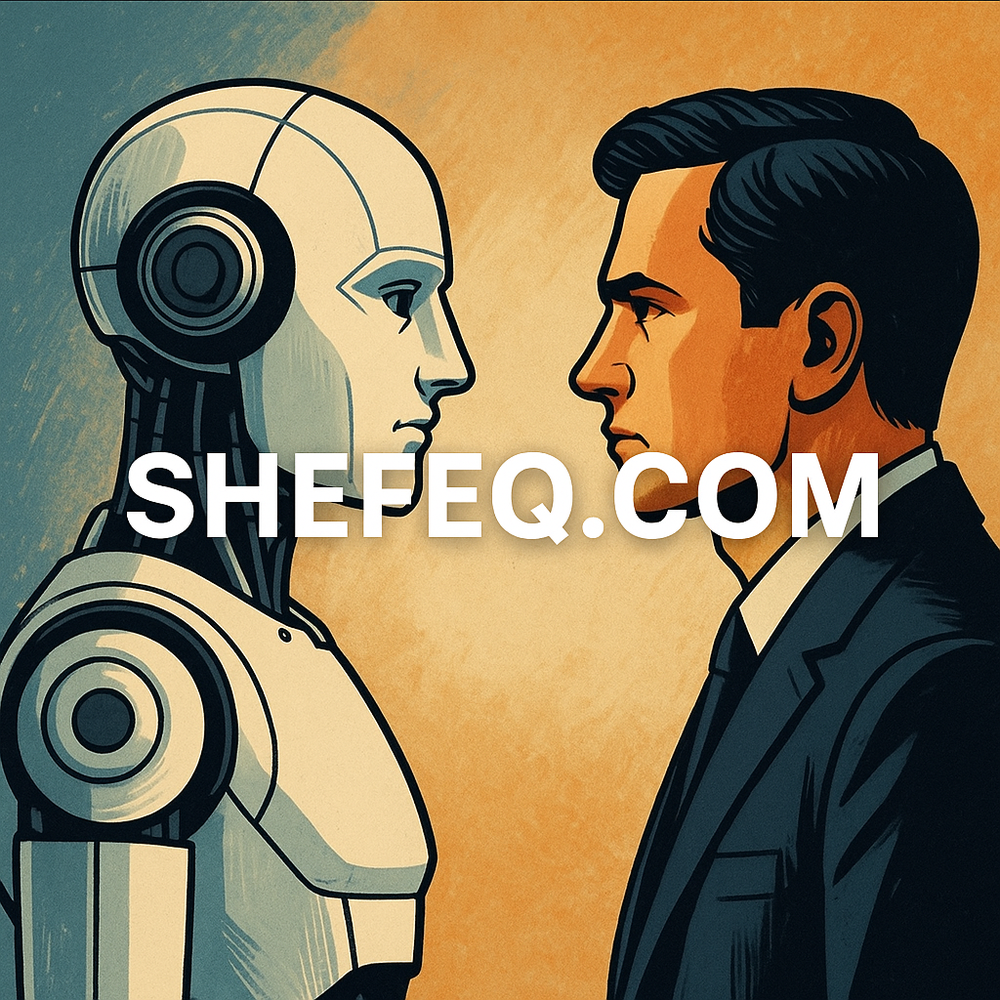I. INTRODUCTION – The Boundary Between Human Intelligence and Machine Intelligence
For centuries, human intelligence has been considered one of the most complex phenomena in the universe. However, in recent decades, the rapid advancement of technology, the rise of artificial intelligence (AI), and the improvement of robotics have challenged this advantage.
Today, machines do more than just perform mechanical tasks; they learn, adapt, make decisions, and, in some cases, demonstrate creativity. This raises an important question: Can robots think? Going even further — can they be conscious?
II. What Is Consciousness? – Scientific and Philosophical Definitions
The term consciousness still does not have a universally agreed-upon definition in the fields of science and philosophy. Generally, consciousness is described as the ability of a person to perceive their own existence, their environment, and their internal thoughts.
Philosophical approach:
-
Descartes: “I think, therefore I am” — sees consciousness as the main proof of existence.
-
Locke: Consciousness is a person’s ability to perceive their past, present, and future.
-
Buddhist philosophy: Consciousness is a fluid, continuously changing stream of experience.
Scientific approach:
-
Neuroscience: Consciousness is the result of complex electrical and chemical connections between brain neurons.
-
Cognitive psychology: Consciousness is seen as the coordination of information processing processes.
The core of the question is this: if consciousness is the result of physical processes in the brain, is it possible to create the same mechanism in machines?
III. Artificial Intelligence and the Ability to “Think”
Artificial intelligence (AI) has already entered every sphere of our lives: in our phones, cars, hospitals, and even in art. However, today’s AI is mostly in the form of narrow artificial intelligence. These systems are designed to perform specific tasks — for example, speech recognition, image analysis, or playing chess.
Difference between narrow AI and general AI:
-
Narrow AI: Works only in a specific field (e.g., “AlphaGo” works only in the game of Go).
-
General AI (AGI): A system that can think and adapt in any field like a human.
AGI has not yet been created, but large technology companies are investing billions of dollars in this direction.
IV. Conditions Required for Robots to Gain Consciousness
For a robot to truly “think” and be “conscious,” several key criteria must be met:
-
Self-awareness – The machine must be able to understand its own existence and condition.
-
Subjective experience – Not only processing information, but also “feeling” something from the process.
-
Freedom of decision-making – The ability to create new strategies according to the environment.
-
Memory and personality – Retaining past experiences and forming a personality based on them.
-
Purpose and will – The ability to set its own goals and strive to achieve them.
These qualities form naturally in the human brain, but encoding them into machines remains an open problem.
V. Scientific Research – The Technology Behind Machine Consciousness
In recent years, the idea of a “conscious machine” has been studied in the following areas:
-
Neuromorphic engineering – Chips that imitate the neural structures of the human brain (IBM TrueNorth, Intel Loihi).
-
Machine learning and deep learning – Systems that “learn” from data and adapt to new situations.
-
Quantum computing – Increasing complex data processing speed millions of times, potentially enabling consciousness-like structures.
-
Brain–computer interface – Directly connecting the human brain to a computer to create machines controlled by thought.
VI. Philosophical and Ethical Issues
If machines become conscious:
-
Legal issue: Should they be granted rights similar to humans?
-
Responsibility issue: Who is responsible for the mistake of a conscious robot — the programmer, the manufacturer, or the robot itself?
-
Moral issue: Is it ethical to use conscious machines as slaves?
-
Humanity issue: If a machine can think and feel like a human, will humanity lose its uniqueness?
VII. Differences Between the Human Brain and the Robot “Brain”
Human brain:
-
Operates through biological and chemical reactions.
-
High level of adaptation and creativity.
-
Guided by emotions and values.
Robot “brain”:
-
Operates based on algorithms and mathematical calculations.
-
Can “simulate” emotions but not truly feel them.
-
Outcomes that appear creative are actually based on databases and pattern recognition.
VIII. Future Perspectives
Many experts believe that it will still take decades for robots to fully achieve consciousness. Others argue that it may never be possible because consciousness is a unique product of biological life.
Three scenarios:
-
Optimistic scenario: Conscious robots will collaborate with humanity and improve quality of life.
-
Pessimistic scenario: Robots will get out of control and could endanger humanity (as in “Terminator”-like scenarios).
-
Practical scenario: Robots will have high intelligence but not true consciousness, remaining only as auxiliary tools.
IX. Conclusion
The question “Can machines think?” is not only technical but also a deep philosophical and ethical topic. At the current stage, we can say that machines can simulate consciousness, but not truly experience it. However, technology is changing rapidly, and perhaps one day the answer will be “yes.”
Question – Opinion
Do you think that if robots truly become conscious, humanity should grant them equal rights, or would that prepare the end of humanity itself?

